

By: Brian A. Hemstreet, PharmD, FCCP, BCPS
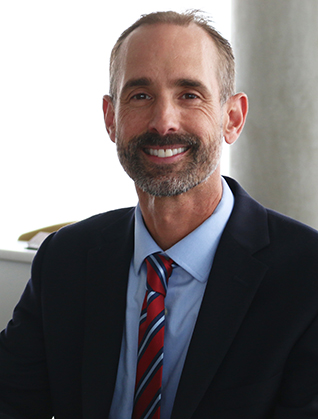
http://www.ucdenver.edu/academics/colleges/pharmacy/Departments/ClinicalPharmacy/DOCPFaculty/H-P/Pages/Brian-Hemstreet,-PharmD.aspx
Definitions for sepsis and organ failure and pointers for the use of progressive therapies in sepsis hypertension emergency treatment purchase norvasc 2.5mg mastercard. American College of Chest Physicians/Society of Critical Care Medicine Consensus Conference: definitions for sepsis and organ failure and pointers for the use of progressive therapies in sepsis heart attack jack let it out discount norvasc master card. During diastole blood strain falls excel blood pressure chart 10 mg norvasc overnight delivery, however will increase after systole as the guts pumps more blood into the arteries pulse pressure difference norvasc 10mg without prescription. When taking a sufferers pulse, you need to be concerned with two elements: price and character. Any pulse price above 100 beats per minute is fast (tachycardia), while a price under 60 beats per minute is sluggish (bradycardia. The pulse price and character can be determined at a variety of points throughout the physique. The commonest website to determine a sufferers pulse is the radial pulse however in an emergency situation higher websites to check for a pulse are carotid and femoral artery. How to take the heartbeat at these websites : Radial Pulse: Take two fingers, ideally the 2nd and 3rd finger, and place them in the groove in the wrist that lies beneath the thumb. You can feel the heartbeat of the frequent carotid artery by taking the same two fingers and operating them alongside the outer edge of your trachea. How to seek out carotid artery : Use your index & center fingers to seek out the exhausting prominence in the front upper a part of the neck. The midinguinal point lying half-method between the anterior superior iliac spine and the symphysis pubis marks the traditional location of the femoral artery. Remember that pulsations shall be felt in the femoral artery in cardiac arrest sufferers receiving chest compressions! A single breath is the entire process of breathing in (inhalation) followed by respiration out (exhalation. When observing respiration in connection to vital indicators, you need to be concerned with two elements: price and character. The normal respiration price for 25 an grownup at rest is 12 to twenty breaths per minute. A fast respiration price is more than 28 respirations per minute, and a sluggish respiration price is lower than 10 breaths per minute. A fast or sluggish respiration price signifies the patient is in need of immediate medical attention and should be transported to a medical treatment facility as soon as attainable. A regular rhythm is when the interval between breaths is constant, and an irregular rhythm is when the interval between breaths varies. Count the number of breaths taken by the patient throughout 30 seconds and multiply by 2 to obtain the breaths per minute. Blood Pressure Blood Pressure is the strain which blood exerts against blood vessel walls, usually arteries. The strain created in the arteries when the guts pumps blood out into circulation (heart beat) is called the systolic blood strain. The strain remaining in the arteries when the guts is relaxed (between beats) is called the diastolic blood strain. The systolic strain is at all times reported first and the diastolic strain second (e. High blood strain (hypertension) exists once the strain rises above 150/90 mm Hg. Keep in thoughts that sufferers might exhibit a short lived rise in blood strain throughout emergency situations. More than one studying shall be needed to determine if a excessive or low studying is simply short-term. You should report main modifications in blood strain immediately to medical facility personnel. The m p e r a t u re Body temperatures are determined by the measurement of oral, rectal, axillary and aural (ear) temperatures. In emergency situations, taking a traditional physique temperature is probably not indicated, so a relative skin temperature may be carried out. A relative skin temperature is a fast assessment of skin temperature and situation. To assess skin temperature and situation, feel the sufferers brow with the again of your hand. Brain harm is probably going if cardiac arrest goes untreated for more than five minutes. For the most effective probability of survival and neurological recovery, immediate and decisive treatment is imperative. Many other cardiac and non-cardiac conditions also improve ones risk Approximately 60–70% of cardiac arrest is said to cardiac illness. No lower than 30% of them at post-mortem showing indicators of latest myocardial infarction. In infants and youngsters, the commonest reason for cardiac arrest is respiratory arrest. Respiratory disorders most often resulting in cardiac arrest embody airway obstruction, smoke inhalation, drowning, an infection and sudden toddler demise syndrome. In adults, the opposite usually happens cardiac arrest leads to respiratory arrest. Signs and signs Cardiac arrest is an abrupt cessation of pump perform in the heart, as evidenced by the absence of a palpable pulse. Due to insufficient cerebral perfusion, the patient shall be unconscious and may have stopped respiration. Diagnosis the primary diagnostic criterion to diagnose a cardiac arrest is lack of circulation, nonetheless there are a selection of ways of figuring out this. In many cases lack of carotid pulse is the gold standard for diagnosing cardiac arrest, however lack of a pulse (significantly in the peripheral pulses) may be a result of other conditions (e. The time period "cardiac arrest" implies a sudden interruption of cardiac output, which may be reversible with acceptable treatment. It is important that those that may be present at the scene of a cardiac arrest should have learnt the suitable resuscitation skills and have the ability to put them into practice. In addition, if the skilled lay rescuer is able to perform rescue breaths, compressions and breaths should be supplied in a ratio of 30 compressions to 29 2 breaths. Adult fundamental life support sequence Basic life support consists of the next sequence of actions: 1. Turn the victim onto his again after which open the airway utilizing head tilt and chin lift: find him supplied there a. Keeping the airway open, look, hear, and feel for normal respiration : assist if needed. Place the heel of one hand in the centre of the victims chest (which is the cell phone. Do not apply any strain over the upper abdomen or the best way of acquiring help is backside end of the sternum. After every compression, launch all the strain on the chest with out shedding respiration remains 5B. Pinch the gentle a part of the victims nostril closed, utilizing the index finger and thumb of your hand on his brow. Blow steadily into his mouth whilst watching for his chest to rise; take about one second to make his chest rise as in normal respiration; that is an efficient rescue breath. Maintaining head tilt and chin lift, take your mouth away from the victim and look ahead to his chest to fall as air comes out. Take one other normal breath and blow into the victims mouth once more to offer a total of two 6. Stop to recheck the victim provided that he begins to show indicators of regaining consciousness, such as coughing, opening his eyes, eight. The fingers should not press deeply in the gentle tissues beneath the chin, as this might hinder the airway! This maneuver will lift the sufferers tongue away from the again of the throat and supply an adequate airway.
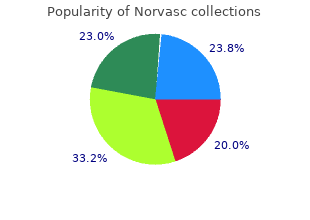
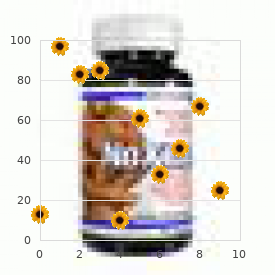
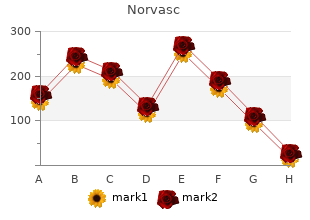
Crews blood pressure medication and grapefruit buy genuine norvasc on line, as a rule arrhythmia v tach buy line norvasc, are assigned secondary functions blood pressure 6240 order norvasc without a prescription, and function a back-up for automated operations heart attack vs stroke order discount norvasc on-line. This situation diminishes the active participation by crews and as a consequence lower their readiness to behave in cases of equipment failure or other emergencies. Effective interactions amongst crews and hardware can be fostered via an built-in systems strategy to spacecraft design, which substitutes the design of a unified human operator-hardware system for the design of particular person hardware components. In this strategy, the crew is handled as the main, active, defining part of the system, and the spacecraft systems managed by the crew are handled as passive components. All out there resources must be used to offer most reliability, which in some cases means maximizing the extent of automation. Special coaching methods and programs at the moment are being developed that may help active crew involvement with highly automated station management. Spacecraft Architecture and Interior Design Another means of enhancing the effectivity of the crew-spacecraft system is to enhance the useful consolation or habitability of working situations for its human operators. Such improvements, based on ideas of architectural and inside design, purpose to offer variety in volumes, varieties, and colors of working and residing modules, compartments, areas interiors, panels, and work stations. Ideally, these areas could be reconfigured as needed over 34,35 the course of a flight. From the standpoint of useful consolation, the inside structure and configuration of Mir is greatly constrained, being decided by the configurations of the spacecraft hull. In basic, its design represents an appropriate steadiness between hardware and dealing situations for the crews when it comes to maximizing productiveness, sustaining 6 Vl 4 Ch 11 Psychological Analysis and Monitoring of Crew Performance Myasnikov et al. The success of this steadiness is demonstrated by the reliability and effectivity of the crew-spacecraft system during missions lasting up to 1 year. Planning Mission Tasks Planning can have an unlimited influence on the effectivity with which a wide variety of tasks are performed on board a spacecraft. Appropriate planning organizes the work of the crew (both temporally and spatially), defines the course of that work, and establishes the quantity of effort needed to complete the work in order to satisfy the goals and objectives of the mission. In a sense, planning is a part of the cyclic course of by which house flights are managed. The essence of planning is the identification of a sequence of actions that will achieve mission objectives via remodeling details about the standing of the spacecraft and the environment. During the method of planning, the order of flight operations and their temporal relationships to one another are established. The results of the planning course of is the creation of a flight plan by which mission objectives are achieved and the security of the crew is maintained. In the Russian house program, three levels of planning correspond to 3 kinds of plans: the overall flight plan, the detailed flight plan, and the schedule of flight operations. The total flight plan for crewed house stations covers durations lasting 10–12 days, and contains the record and sequence of flight operations performed on each day. The detailed flight plan covers 24-hour durations and supplies a schedule for crew actions (see Section D below), operation of onboard systems, and exchanges of knowledge between the crew and other components of the flight management system (e. The schedule of flight operations contains instructions on the way to monitor the operation of onboard systems and the way to change the exercise schedule if contingency conditions come up. Flight planning begins on the phase of spacecraft design and continues till the flight is completed. The extent to which crews are concerned in planning during the course of the flight is dependent upon the autonomy of the spacecraft and the allocation of this operate between the crew and the Mission Control Center. Work-Rest Schedule As described above, planning is a technique by which both the effectivity of the crew-spacecraft system and crew performance can be enhanced. In this fashion, planning can directly or indirectly decide the potential for bettering working situations, supporting performance, and increasing 36 productiveness. One ergonomic factor that definitely affects cosmonaut performance is the daily work schedule. Russian research using simulations and house flights led to the event of recommendations for house crew schedules. Used to 37 create rational plans for crew work during long flights, these recommendations outline the specifications for the content, group, planning, and monitoring of the work-relaxation schedule. Specifications lined embody the optimum length of workdays, finest numbers of work shifts per week, best relaxation durations after work shifts, and so on. From the standpoint of ergonomic necessities, this sort of work-relaxation schedule allows workloads to be standardized, whereas concurrently defending the well being and performance capability of the crew. Cosmonauts daily routines are divided into working hours, private time, and sleep interval. Four meals are planned per day, with 3 to 6-hour intervals between them; two 1-hour exercise classes are scheduled for each day, to happen no sooner than 2 hours after meals and no later than 2 hours before bedtime. As famous above, the overall work-relaxation schedule is a part of the overall flight plan, and the crewmembers themselves assist to develop it as a lot as possible. Routine daily operations (see Table 2) also are allowed on the second day, however most of today is devoted to particular person recreation. Both the daily and weekly work cycles, and their relationship to time schedules on Earth, are versatile, and can be changed according to the wants of the individual crewmembers and the flight program. For instance, many crewmembers, especially those on their first house missions, expertise psychosensory discomfort, sleep issues, and psychological pressure during the acute adaptation interval. Because these symptoms can intrude with the flexibility to complete the flight program in the stipulated time, the crews workday for the primary 14 days of flight is proscribed to 50% of that expected later (although it by no means drops below 1. As one other instance, the workday during the hectic ultimate 2 weeks of flight is shortened by 2 hours, so that the crew (usually fatigued) can use this time for countermeasures. Visiting Crews Daily work routines for visiting crews can be adjusted so that workdays last as long as 10 hours, for no more than 7 consecutive days. These routines additionally can be amended as needed with regard to the well being of the crewmembers. Sleep Shifting Occasionally, flight tasks require that the crews shift their sleep-wake cycles for up to 12 hours. The intervals between such shifts have to be no shorter than 2, and no more than 6 shifts can happen during even long house flights. After the tasks that required the displacement are completed, the crew is given 2 days of relaxation. As the crew is sleep-shifting, and again as they return to a normal schedule, the length of their workdays are shortened, with the exact length decided on the basis of the crews physiological standing. Subsequent increases in the workday to its regular length depend on the speed at which crewmembers adapt to the working situations. Several variants of work-relaxation schedules have been tested during long house flights between 1971 and 1992. Three schedules that concerned sleep-wake displacement have been attempted on Salyut: an inverted work schedule by which the sleep interval was displaced by 12 hours (prime crew 4 on Salyut-6); a multistep displacement of the sleep schedule (prime crew 1 on Salyut-5, see Fig. Other variants were a piece-relaxation schedule with a 9 to 10-hour workday (prime crew 2 of Salyut-7), and a piece-relaxation schedule with a 24-hour diurnal cycle intently tied to Moscow time (Mir crews. One means of judging how well the assorted schedules work is by how many work hours (beyond the eight. For instance, on the 1158-hour Soyuz-21/Salyut-5 flight cited above (and shown in Fig. In other words, the planned proportion of 30% work to 37% private time to 33% sleep was really forty four% work to 30% private time to 26% sleep. This enhance in the time spent on work has been current in other flights as well, and usually exceeds the scheduled allottment by 6–16%. Converting these percentages into absolute number of days, revealed that crews on Salyut-3, -4, -5, -6, and -7 worked 12–37 extra days. In distinction, the Mir crews worked no extra days after the schedule was optimized (except for prime crews 7 and eight, who worked between 4 and 6 extra days. In abstract, the 24-hour diurnal cycle appeared to be one of the best when it comes to supporting productive work by the crews. Nevertheless, work-relaxation schedules proceed to be a crucial issue for house psychology and medication, and requires extra attention. We contend that two basic problems stay to be addressed so as to maximize the effectiveness of structured work-relaxation schedules. Particular attention must be paid to avoiding increases in the length of workdays—and the corresponding decreases in time out there for other actions—and eliminating unjustified displacements of the sleep-wake cycle and disruptions of meal and exercise schedules. The second issue concerns the number of crewmembers current on spacecraft, and requires adjusting the size of crews so that they correspond to the quantity of work on board trendy research stations. Psychological Support Factors All of the measures described above will assist to increase flight safety.
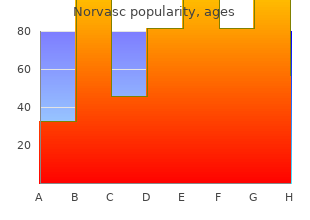
In the twentieth century there has been a development of specialization heart attack jaw pain right side order norvasc us, but the twenty first century brings setting Michael Franklin hypertension 28 years old order norvasc, Jonathan Schooler Syndromes Resident has to develop these attributes via completely different mechanism of interaction arrhythmia nos purchase norvasc us. Degree course is predicted to carry out major and minor surgical procedures independently as well as underneath supervision of a college member/a senior resident arrhythmia tutorial buy genuine norvasc. She/he should have the ability to do many major operations independently similar to: (Few examples only given): • Tracheostomy blood pressure 3 readings buy generic norvasc on line, • Tonsillectomy • Adenoidectomy/grommet insertion blood pressure 7050 purchase norvasc from india, • Nasal Polypectomy • Incision/drainage of quinsy/different abscesses, • S. Be in a position to manage widespread emergies like, fracure nasal bone, stridor requiring a tracheostomy, epistaxis, Subperiosteal abscess, and Peritonsillar abscess. Research methology/ Reporting on analysis Learns the fundamentals in analysis methodology and make the thesis protocol with the four months of admission. Selection of thesis Topic Subject of thesis shall be selected by the candidate underneath steerage of Faculty which shall be approved by the departmental information and different college. It is to be approved by the Central thesis committee of the Institute/College if such committee does exist, and the ethical concerns are also discussed in such Research Programme committee. Once the thesis protocol is approved the candidate begins his analysis work underneath direct supervision of information and coguides. Three/six monthly progress of the thesis shall be checked to know the outcomes/or difficulties confronted by the Candidate. At the discretion of director/rector/thesis committee one month extension could also be given to a candidate for submission of the protocol and the final thesis for any legitimate cause for the delay. Journal club: 2 hrs length Paper presentation/dialogue once per week (Afternoon. Lecture/dialogue : Lectures on newer topics by Faculty, rather than seminar/as per want. Case presentation in the ward and the afternoon Special clinics (similar to vertigo / otology Tumour clinics. Resident will current a clinical case for dialogue earlier than a college and dialogue made pertaining to its management and choice to be recorded in case recordsdata. Surgicopathological Conference: Special emphasis is made on the surgical pathology and the radiological facet of the case in the pathology deptt. Combined Round/Grand Round: these workouts are to be carried out for the hospital once/wk or twice/ month involving presentation of bizarre or troublesome sufferers. Presentations of circumstances in clinical combined Round and a clinical series/analysis data on clinical supplies for benefit of all clinicians/ Pathologists/different associated disciplines once in week or forthrightly in the Grand round. Community camps: For rural exposure and likewise for experiences in preventive facet in Rural situation/ hospital/school, Patient care camps are to be arranged 2-3/yr, involving Residents/junior college. The ear circumstances are completely investigated and are discussed by the Junior Residents with the college for his or her management/discussions are made after every case is offered. Bedside clinical training for affected person care care management and for bedside manners: Daily for ½ to at least one hours length throughout ward round with college and 1-2 hours in the evening by senior resident/ Faculty on emergency obligation, bedside affected person care discussions are to be made. Once every week one Faculty should take a one hour Teaching Round by Rotation of Faculty (four/5 such rounds per semester of 6 months. Death Cases: Once a month/ once in 3 months the information of such circumstances are offered by the Senior Residents. This programme helps to take corrective measures as well as to maintain accountability in affected person management. Clinical interaction with audiologists/speech therapist: Clinical interaction with audiologist/ speech therapist pertaining to management of the sufferers with 1audiological/speech issues are to be made/dialogue arranged. Audiologic methods and remedy strategies are to be made identified to Resident doctors. Research Methodology : Courses and Lectures are to be arranged for the residents for language proficiency by humanity teachers apart from few lectures on human values and moral points in affected person care. Writing Thesis: Thesis progress is offered once in 3 months and dialogue made in the dept. Guides/co-guides are to listen to the issues of the candidate; can present help to the scholar. Progress made or any failure of the candidate could also be dropped at the notice of college Dean/ Principal. Final Examination & Examiners the Oral, Clinical and Practical Examination: One or 2 centres depending on native college rules. Results of the examination shall be declared as pass/failed/pass with distinction (Grades/marks can also be given if needed as per University Rules. Assessment Formative: 25% (6 monthly, every with 5% weightage) Based on day to day/semester Tests, jointly or individually assessed by completely different college members & computed and a final aggregrate shall be thought of collectively and that will considerate a 2. Both Formative evaluation and Summative evaluation shall be added collectively on the time of ultimate examination, and results prepared accordingly. Clinical Patient presentation/dialogue: (i) One long case: the long case shall be structured, comprising history taking, clinical examination, investigations, choice making, proposed remedy modalities, moral justification and personal attributes. One of the interior examiner will be the Head of the Deptt and he /she shall be Chairman/Convener. The second inside examiner shall be next senior most member of Faculty of the deptt offered he/she is eligible for such obligation. The external examiners shall be asked to send two sets of question papers for the theory examination. The Chief inside examiner or Chairman/Convener will reasonable it and finally make two sets of question paper, – persevering with eight-10 shorts questions. In presence of the external examiners, the Chairman and the interior examiner shall make the necessary arrangements for conducting the Final examination. For completely different College/Institution, separate examination Centre/Examiners could also be arranged/ appointed for convenience and correct administration of the Final examination. While preparting the Final Results, Formative evaluation of the scholars shall be taken into consideration and the results shall be despatched to the college underneath seal cover. Syllabus for Individual Papers Paper –I Physiology Mechanism of notion of scent and style, mechanism of respiratory and voice manufacturing, laerimation, deglutition and salivation. Functional tests of the nostril and para nasal sinuses, Mechanism of cough and sneezing. Physics of sound, theories of hearing, mechanism of notion of sound and speech Production, Physiology of equilibrium & Cerebral operate. Anatomy Embryogenesis of ear, nostril and throat together with palate and the larynx, Oesophagus, trachea and lungs, tongue, salivary gland Head & Neck & skull base and so forth. Prevention and remedy, infectious ailments of Otolaryngology and Head Neck area. Circulatory and nervous disturbances of the nostril, throat and ear and their results on different organs of the body. Deformities, injuries sinus infections, polyps and the tumours of the nostril, and paranasal sinuses. Examination of the ear, deafness and allied ailments, problems of ailments of the ear. Diagnosis and rehabilitation of the Hearing handicapped together with, dishing out of hearing help different vibrotatile aids. Pathology of assorted ailments of the larynx and throat, tracheo bronchial tree and their causative organisms. Indications and numerous techniques of direct laryngoscopy, nasal endoscopy, bronchoscopy and oesophagoscopy, together with microlaryngoscopic procedures. The knowledge of the frontiers of the oto-laryngology and lateral skull base surgery. Newer techniques for Radiotherapy together with, use of gamma knife for remedy of intracranial tumours and different malignancy. General ideas of faciomaxillary traumatology and likewise neck harm, Plastic surgery as relevant to Otolaryngology. Basic computer systems, computer averaging of the organic signals and its functions in Otolaryngology & Otolaryngologic equipments. To apply surgery safely and successfully, backed by scientific knowledge and sound skills 2. Various studying activities are Journal Club displays, case displays, ward rounds and teaching rounds. Purchase 10 mg norvasc fast delivery. Nokia (previously Withings) Wireless Blood Pressure Monitor Review.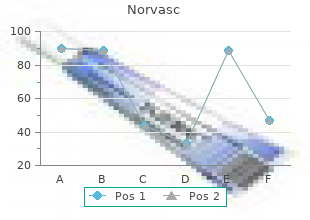
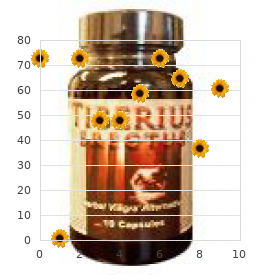
Raleigh Office:
5510 Six Forks Road
Suite 260
Raleigh, NC 27609
Phone
919.571.0883
Email
info@jrwassoc.com